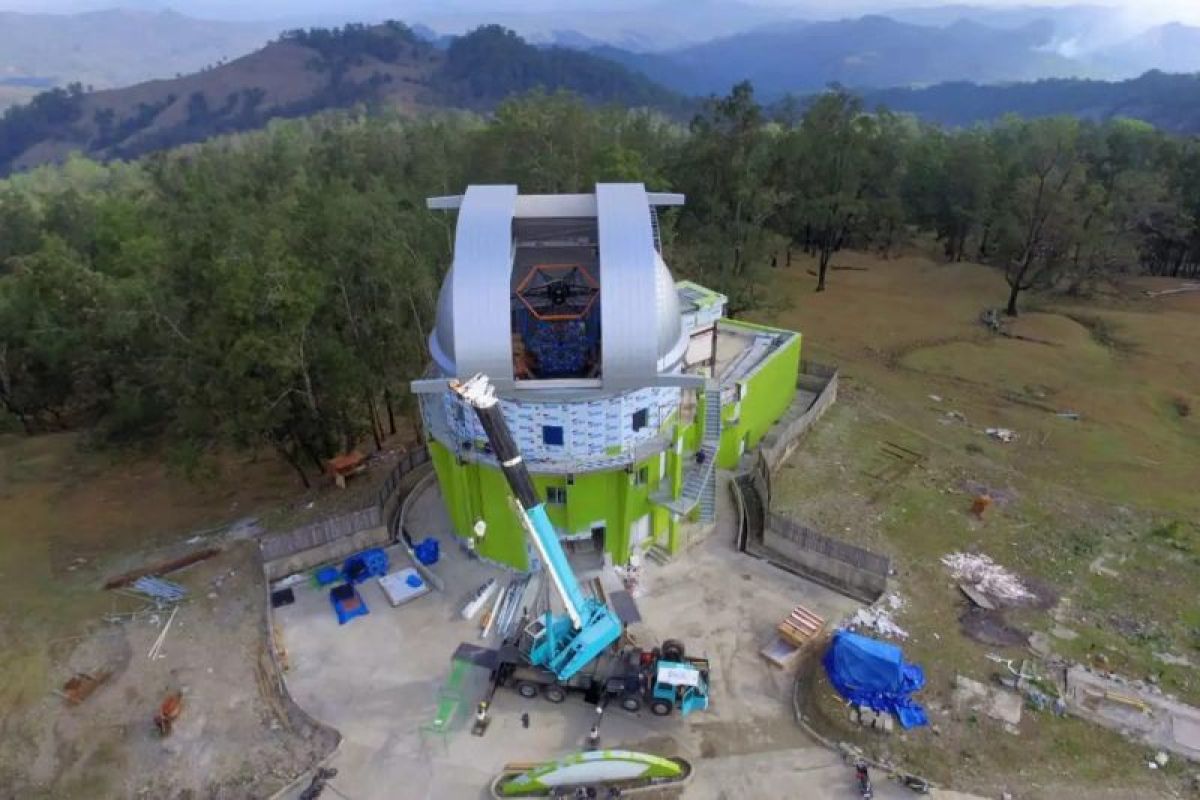From Indonesia, astronomers can observe both the northern and southern skies. This is a critical contribution...Jakarta (ANTARA) -
Indonesia, on account of its strategic location, has been enabling astronomers to make observations of celestial objects from the southern part of the Earth, according to the National Research and Innovation Agency (BRIN).
Chief expert researcher at BRIN's Space Research Center, Thomas Djamaluddin, said that the observation of the southern skies relies on various observatories located in the planet's southern hemisphere, including in Indonesia.
"From Indonesia, astronomers can observe both the northern and southern skies. This is a critical contribution to the development of global astronomy," he explained during a discussion on astronomy, which was followed from Jakarta on Friday.
Djamaluddin said that the southern part of our planet still lacks observatories and noted that global astronomers have been relying on several observatories located in Indonesia, South Africa, Australia, and South America to make observations.
Moreover, he added, a majority of observatories located in the Earth's northern regions, such as the United States, Europe, Japan, and China, have been focusing more on conducting astronomic research of the northern skies.
"It is difficult for astronomers in the north to observe the southern skies, considering that stars will appear too low from northern observatories. For that reason, it is necessary to observe celestial objects in the southern skies from southern observatories," he explained.
He then underscored that Indonesia is situated in a highly strategic position for astronomical observation, given that there is less land mass in the southern hemisphere than in the northern part of the Earth.
BRIN is currently developing the Timau National Observatory in Kupang District, East Nusa Tenggara Province. The agency is planning to start testing the observatory in mid-2024.
The observatory will be equipped with a telescope with a diameter of 3.8 meters, making it the biggest in Southeast Asia. The large-sized telescope is expected to sharpen views of celestial objects that glow dimly.
Related news: Navigating stars, other celestial objects at the Planetarium
Related news: Asymmetric molecule, key to life, detected in space for first time
Chief expert researcher at BRIN's Space Research Center, Thomas Djamaluddin, said that the observation of the southern skies relies on various observatories located in the planet's southern hemisphere, including in Indonesia.
"From Indonesia, astronomers can observe both the northern and southern skies. This is a critical contribution to the development of global astronomy," he explained during a discussion on astronomy, which was followed from Jakarta on Friday.
Djamaluddin said that the southern part of our planet still lacks observatories and noted that global astronomers have been relying on several observatories located in Indonesia, South Africa, Australia, and South America to make observations.
Moreover, he added, a majority of observatories located in the Earth's northern regions, such as the United States, Europe, Japan, and China, have been focusing more on conducting astronomic research of the northern skies.
"It is difficult for astronomers in the north to observe the southern skies, considering that stars will appear too low from northern observatories. For that reason, it is necessary to observe celestial objects in the southern skies from southern observatories," he explained.
He then underscored that Indonesia is situated in a highly strategic position for astronomical observation, given that there is less land mass in the southern hemisphere than in the northern part of the Earth.
BRIN is currently developing the Timau National Observatory in Kupang District, East Nusa Tenggara Province. The agency is planning to start testing the observatory in mid-2024.
The observatory will be equipped with a telescope with a diameter of 3.8 meters, making it the biggest in Southeast Asia. The large-sized telescope is expected to sharpen views of celestial objects that glow dimly.
Related news: Navigating stars, other celestial objects at the Planetarium
Related news: Asymmetric molecule, key to life, detected in space for first time
Translator: Sugiharto P, Tegar Nurfitra
Editor: Rahmad Nasution
Copyright © ANTARA 2024












